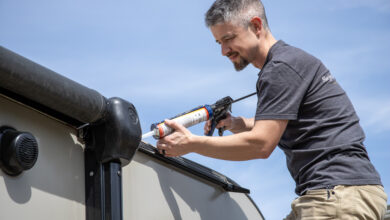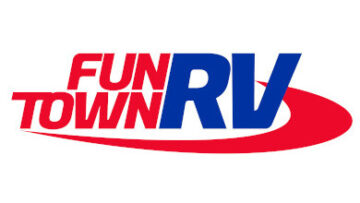
America’s attention span changed when “Rowan & Martin’s Laugh-In” started in 1968 and ran for 140 episodes until 1973. For those old enough to remember this show, it was radical in its short bursts of visual and spoken jokes. What the producers discovered was that people reacted quickly to two- to eight-second sight jokes. Up until “Laugh-In,” camera shots lasted far longer.
Advertising agencies caught on quickly and started creating TV ads that had 15 to 20 visual changes in a 30-second commercial. As television changed, so did the attention span of the audience. While it was believed that the average attention span of a human being in the United States was about eight seconds – one second shorter than a goldfish – that has been disproven. We can focus longer, but the message works best in a storytelling format – something that captures our attention and imagination.
When customers are waiting for help in your service, parts and accessories areas, you have a great opportunity to tell them some stories and create a more bonded customer/RV store experience. I’m guessing many of you reading this column feel the same way when you are at a car dealership or in an endless line to check out at a store.
While I was waiting at the service counter of a car dealership, there was an iPad on a stand playing a 90-second video about a new product that cleans and preserves a PVC dashboard. It was clever, with decent background music, and told the story about how and why it was invented and why it’s different from everything else on the market. By the time it was my turn to check out, I had picked up a bottle of the stuff for $9.95 and happily added it to my purchases.
Retailers know the power of checkout countertop merchandise sales. If you’ve ever been stuck in a long line at Best Buy or HomeGoods, you’ve been routed through small gondolas filled with “pickup” merchandise that is designed to entice you while you are bored or frustrated. We are all aware of this manipulation by now and can find it annoying. But what if your customers can see a lineup of “What’s New Now” products while waiting for service or to check out? It can be interesting and compelling. If one of your RV parts or accessory manufacturers is introducing a new product or an interesting new feature, a short video is a great way to let your customers know about it while they wait. Some of your customers may want to download a video from a QR code linking to a website. Others will be happy to watch the video on a screen while they’re waiting. Always indicate how long a video is so your customer knows whether to stick around to see the ending or to keep moving on.
If you have a large monitor in a waiting area, consider a looped video with a combination of helpful hints for maintaining an RV with new products (sponsored by your vendors) introduced between the helpful tips. If you have an idea of how long people must wait for a part, service or help, you can plan how long the video should be before it starts over again. This worked very well for Apple stores in their Genius Bar area. Personally, I was disappointed when they discontinued their video tips, replacing them with stationary photos.
Hating to wait goes for getting help, as well. Of course, you can never predict when people are going to come through the door to shop. Sometimes it’s like a bus pulls up to let people out, and other times, you could hear a sales associate’s entire life story before you’re happily interrupted by a customer.
When you’re busy and people are waiting for help in your service/parts area, whoever is at the counter needs to acknowledge the people who are waiting. Just being seen can help someone who is feeling impatient. Often, people in a line are wondering, “Does this person have any idea that other people are waiting for help?” When the person behind the desk looks up, smiles and acknowledges those waiting, customers know they are seen and will calm down.
If you hate to wait, imagine what happens when customers come in with children. The average time they can shop is about 10 minutes before the kids get antsy. Few parents will leave their child unsupervised in a store, but when they do, it’s dangerous for the children and your insurance.
If you have a small room or at least a 6-foot-by-6-foot area you can carve out in the back of your store – away from chemicals, sharp items and any doors that lead outside – consider a kids’ room with a mixture of building blocks, crayons and paper, and age-appropriate videos. You can use an old DVD player and start the video when a child is “deposited” into the kid-safe room. Paint the space with calming colors, such as greens and blues, and add some soft pinks. These colors will calm the kids – at least temporarily. If the parents are comfortable leaving their offspring in that room, you’ll have their undivided attention for longer than 10 minutes. But ideally, there should be a clear visual to the room so the parents can be reassured that their kid is safe. Installing carpet tiles in that room makes sense. Buy at least 20% more than you need so you can switch them out when stains occur.
If you routinely have lines in your parts area, consider asking people to take a number like they do at deli counters and at the Costco eyewear department. When more than two people are waiting in line, your parts person can look up, make eye contact, smile and ask them to take a number. This way they are acknowledged and know they will get their turn. I searched online for “Take a number machine” and found the term “ticket dispenser for Take-A-Number System.” These units come with a sign as well. Once someone has their number – and are reassured that whoever is calling out the numbers is loud enough to be heard – they can wander around your accessories area (if it’s nearby) and do some shopping instead of impatiently waiting in a line.
There is a trend to use hand-held devices for quick-and-easy mobile checkout. The benefit to this is convenience and especially speed if you have an indecisive customer. The downside is once they’ve checked out and put their card back into their wallet, they feel the shopping experience is over. Make sure they don’t check out until they’ve seen and purchased the accessories needed to seasonalize their RV as well as needed chemicals and other add-on goodies you’d like to sell.
Don’t make them hate to wait! Make their wait fun, educational and stress-free.



